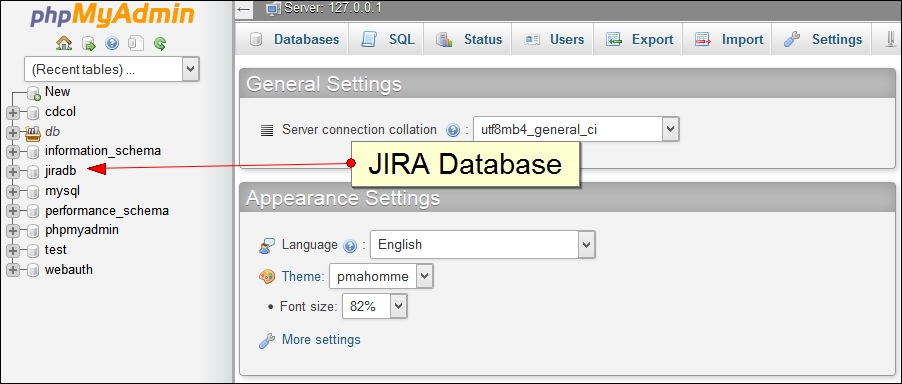Accessing MySQL
The HSQL Database Manager should never be used in the production instance because it's prone to data loss. The recommended database is either MySQL or PostgreSQL. Earlier in this book, we discussed how to create a database in MySQL to store JIRA's data and configure it during the setup phase. To access your database in order to run SQL queries, you can either use the MySQL console, which comes with the MySQL server, or you can use phpMyAdmin.
phpMyAdmin
The phpMyAdmin application can be downloaded from http://www.phpmyadmin.net/.
This is a great web-based tool to manage your MySQL database and it's usually accessed using http://localhost/phpmyadmin/. The exact URL can be different, depending on your installation.
Perform these following steps:
Open the previous URL in your browser to launch phpMyAdmin:

You will notice that the list of databases appears on the left-hand side. Our
jiradbdatabase also appears in this list. We created this database for our JIRA instance.Click on...


























































